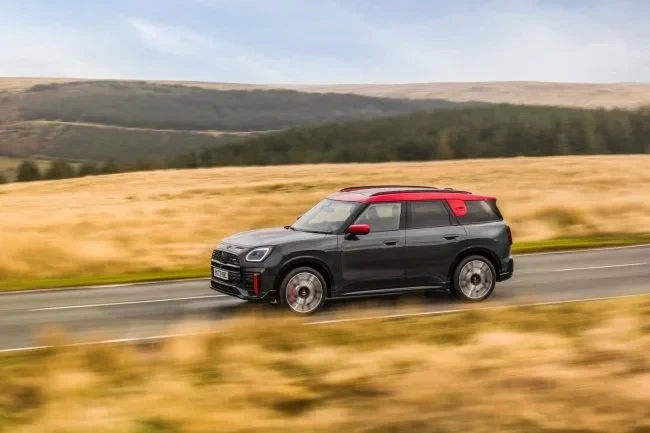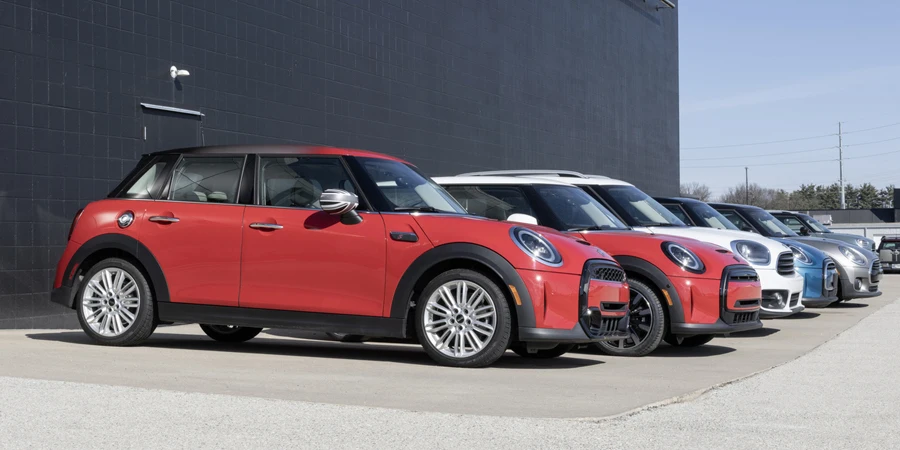BMW’s potentially smart decision to go large with the new Countryman means this is the biggest Mini yet

The third generation of Mini’s largest model lands fourteen years to the month since the debut of the R60 series Countryman at the 2010 Geneva motor show. The replacement was larger, changed build locations from Austria to The Netherlands, and now generation three shifts plants once more.
No longer manufactured by a contractor, U25 (its BMW AG code) becomes not only the first Countryman to be available as an EV too, but no Mini has been made in Germany until now.
CKD assembly will likely continue at the relevant sites which also put together the previous two Countrymen. These were fairly small-scale operations in Malaysia, India and Indonesia, kits being supplied by Magna Steyr’s Graz and VDL’s Born factories respectively.
Built in Leipzig on same line as (multiple) BMWs
Why has BMW chosen to bring the new model in-house, when its partners did such seemingly splendid work between 2010 and late 2023? It’s mostly to do with platforms, powertrains and volume.
U25 ICE and EV variants come down the same line at a revamped Leipzig factory. As this plant builds multiple BMW models, capacity has been raised to 350,000 vehicles a year. Production of the Countryman Electric got underway on 29 February.
Even though all Minis are, like all Rolls-Royces, engineered in Munich, the new Countryman is the most German Mini yet. Because it made perfect sense to twin it with those multiple BMW models.
Front- and all-wheel drive
First up, we have a launch range of three variants, called C, S ALL4 and John Cooper Works ALL4, each one powered by a turbocharged petrol engine. There is no successor for the PHEV from generation two, the imminent EV being the intended replacement.
BMW GB has made no mention of either the 115 kW and 230 Nm 1.5-litre engine available in other countries nor a 2.0-litre diesel. The second of these was stated as being part of the range when the Countryman debuted in pre-production form at the Munich motor show six months ago.
C, the base model grade for ICE-powered cars, has a 125 kW (170 PS) and 280 Nm mild hybrid engine. In Britain, the next variant is the aforementioned S ALL4, which swaps the front-wheel drive Cs 1.5-litre I3 for a 160 kW (218 PS) and 360 Nm 2.0-litre I4, plus four-wheel drive. The range topping JCW also has torque going to two axles, its engine producing 221 kW (300 PS) and 400 Nm.
The central circle goes XL
What is claimed to be the first round OLED display in a production car features for all variants. As well as offering something distinctive, it dominates the dashboard. There is some unintended irony in the fact that this huge, glowing circle is intended to mimic the simple, small speedometer of a 1950s Mini. There are even seven Experience (display) options, including a retro one, along with a subscription-based Connected Package and, as with the BMW i5, streaming and gaming options.
Polyester can be premium
The owner may also specify different fabrics not only for the seats but the door and dashboard too. A two-tone knitted one made from recycled polyester does not sound like something which would appeal to many people. In practice it not only does exactly that but feels nice too. However, I wonder how the black-with-flecks-of-red combination of the JCW I drove will cope with years of strong sunshine.
There is nothing to fault about the quality of the materials themselves, nor the fit of all plastics. I heard no squeaks in any of the cars driven during a media presentation day and these would each be amongst the first RHD series production examples to have been built.
Customise the lighting at both ends
The customisation continues on the outside, with the exterior lights offering different modes. Here is a Mini which can for example have its elaborate half union flag tail lamp motifs swapped for something simpler. Raise the tailgate which those lights sit either side of and there is up 1,450 litres of boot space or 460 with the seats up.
The big headlights and tall-slim rear ones find some of their shapes interpreted inside the Countryman too: door catches and air vents are, unusually, vertically positioned. I could not be accused of having much love for any BMW era Mini interior but this one has changed my mind. It is easily the best yet, even with that oversized screen.
Toggles evolved for the (much) better
Those loved-by-many-but-not-me toggles and the bars between them are gone (applause) with some nice buttons plus, yes, a far better toggly switch which controls the automatic transmission, in their place. The effect is also more premium than the dashboards of some BMWs. These all used to be models of clarity but the great god of digital-everything displays has taken over.
At least no-one could dislike the steering wheel of any new BMW, and that is also the case with the Countryman. Not only small in diameter and thick of rim, it is perfectly round. Yet another thing which should not have been changed by so many OEMs and now – hurrah – properly shaped steering wheels are back.
The JCW is the one to own
The John Cooper Works lives up to the standard set by many previous JCW Minis, its 0-62 mph time of 5.4 seconds and 155 mph top speed being complemented by terrific road holding. It even sounds great, that courtesy of a special flap in the exhaust system for times when you want what is quite an appealing near-growl.
There is a novel feature in one of the Experience modes and this gives you a temporary boost activated by a left-hand paddle. It can get a bit addictive (err, apparently), particularly when the big 24cm circular display shows you a 10 second countdown. Really handy for overtaking, rather than only for generating large smiles.
Two electric variants to come
The electric Countrymen are not yet with us to sample, even in pre-production form but all their statistics have been revealed. There are two vehicles, the Countryman Electric E, which has a 150 kW (204 PS) and 250 Nm motor, and the Countryman Electric SE ALL4 with its two motors. Their combined outputs are 230 kW (313 PS) and 494 Nm. Official WLTP ranges are respectively 287 and 267 miles.
BMW has priced the EVs – each of which has a 64.7 kWh battery – at GBP42,080 and GBP47,180. Which is quite a lot more than the C (GBP29,335), SE ALL4 (GBP34,735) and JCW (GBP41,520). Not that it exists, but a theoretical electric John Cooper Works would be surely north of fifty thousand pounds.
Next Minis
This is the biggest year Mini has ever had in terms of new models and there is more to come, soon. Now that production of the Clubman is over (the final car was built at the Cowley plant on 5 February), a new vehicle to effectively replace it will be revealed in April. The Aceman will at first be manufactured only in China but the Oxford factory will become a second production site in 2026.
To be based on 2022’s Aceman concept, the little electric-only SUV will be positioned above the three-door Mini Hatch and below the Countryman. Length is 4,075 mm with a 2,606 mm wheelbase. In China and possibly Europe too, there will supposedly be S and JCW model grades in addition to the standard car.
Also due later this year is a combustion engine five-door Mini, the first two cars being named Cooper C and Cooper S. They will join the three-door variants, production of which has just commenced at Cowley. A three-door JCW is also due to be revealed in 2024. Then next year we should see a new Convertible.
The new Mini Countryman is offered in Classic, Exclusive and Sport model grades. It is on sale now and the electric variants will be available soon.
Source from Just Auto
Disclaimer: The information set forth above is provided by just-auto.com independently of Alibaba.com. Alibaba.com makes no representation and warranties as to the quality and reliability of the seller and products.




